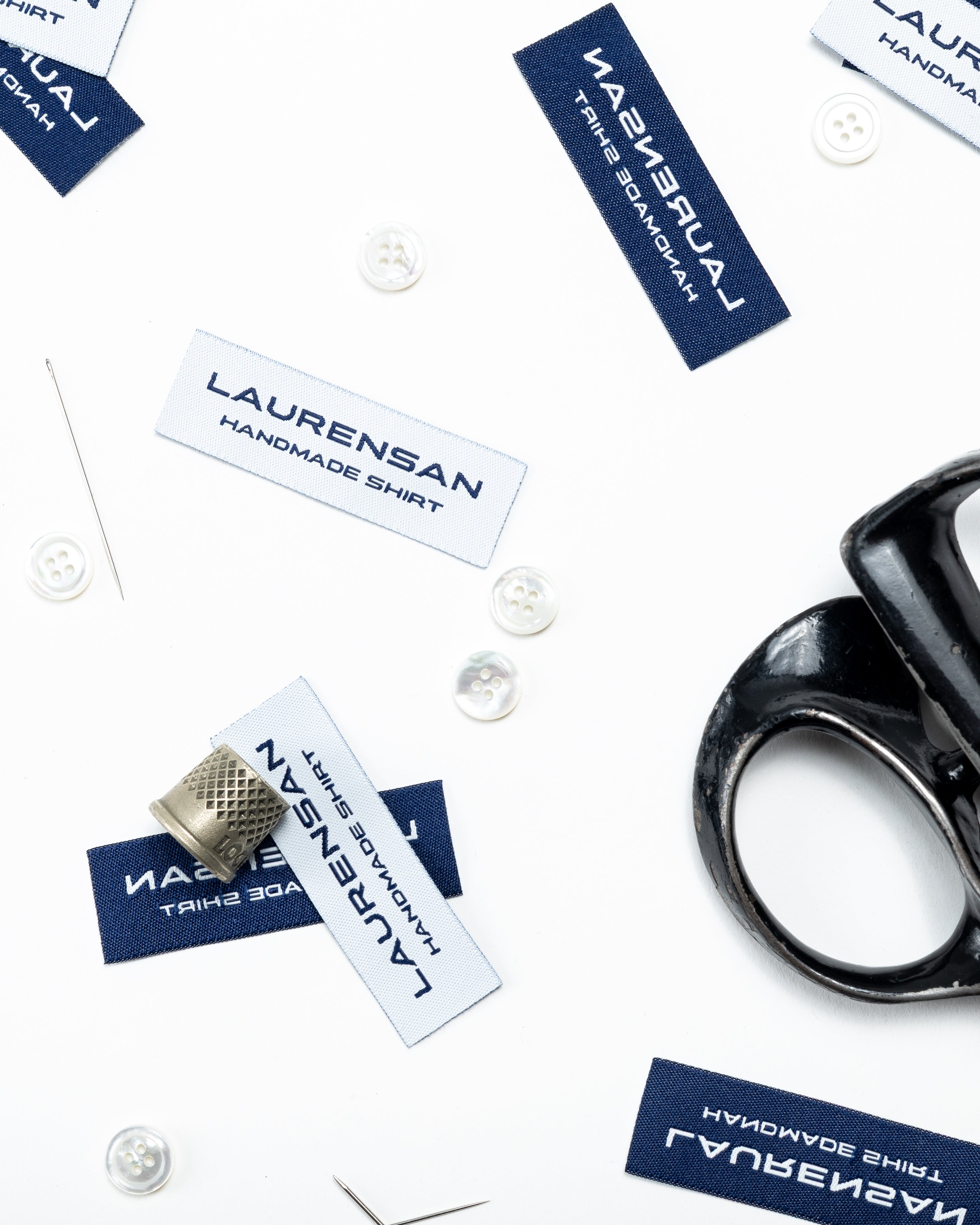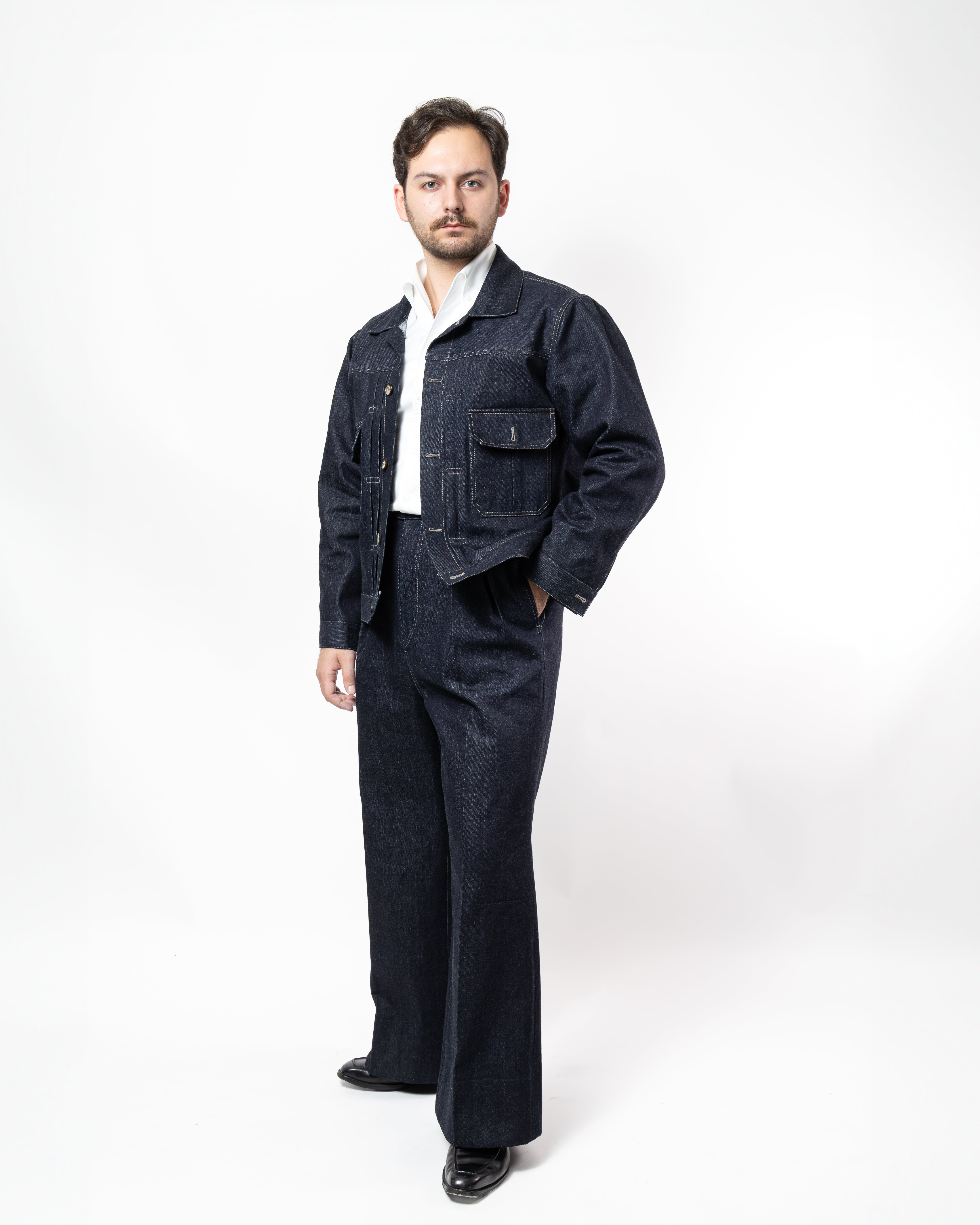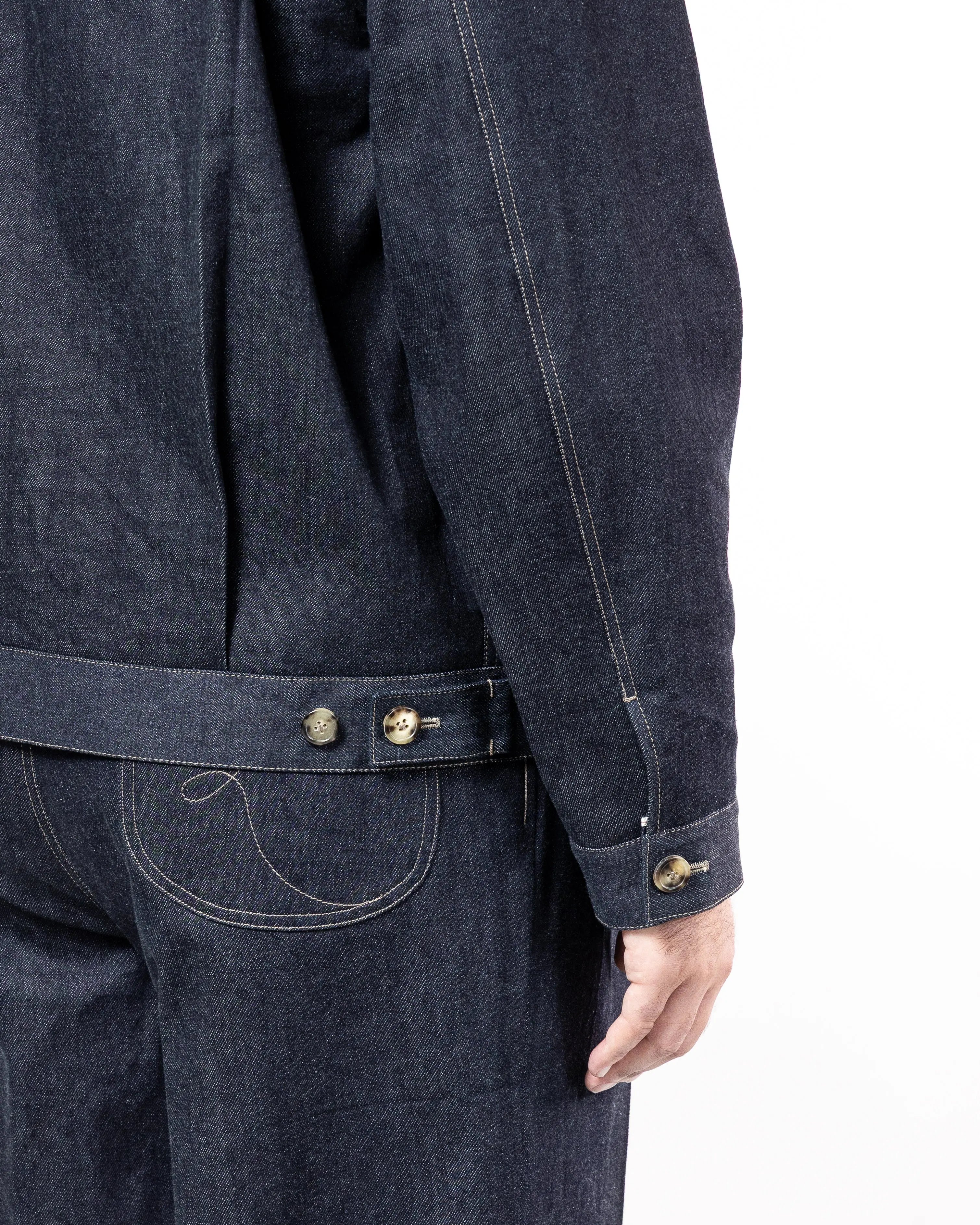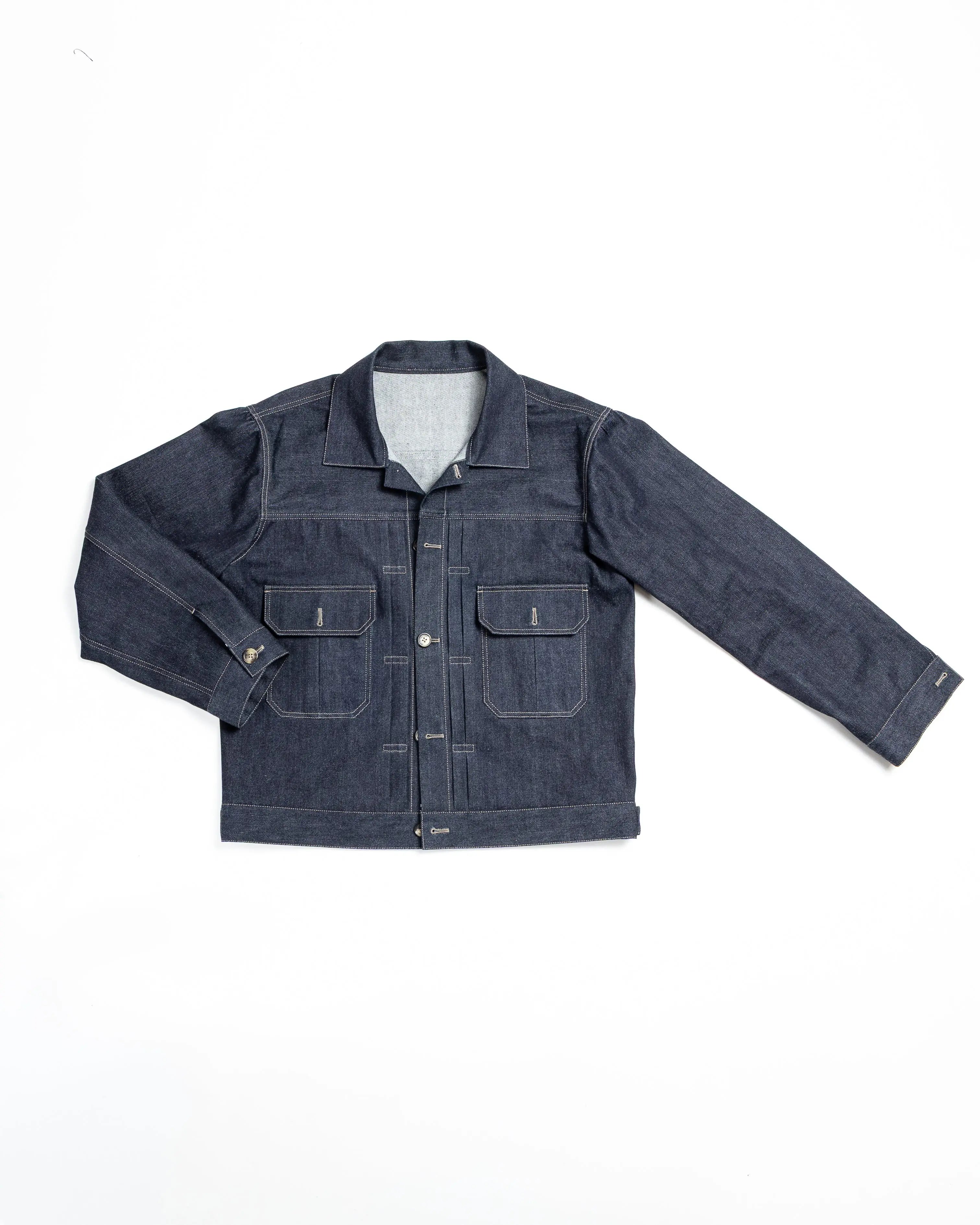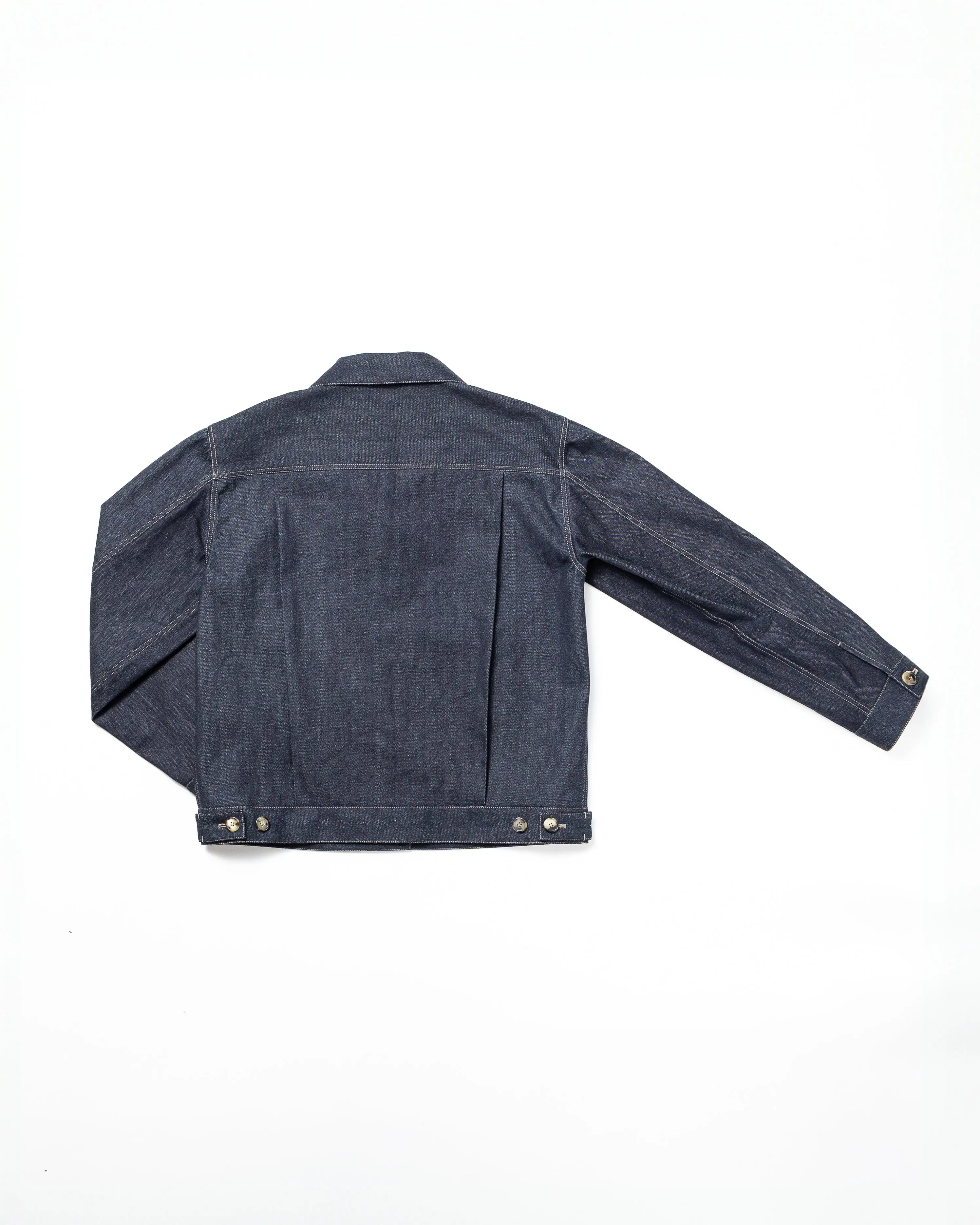Japanese Selvedge Denim: The Excellence of Premium Jeans
What is Selvedge Denim?
The term selvedge comes from the English contraction of “self-edge”. It is a high-quality denim fabric, identifiable by its clean, finished selvedge edges. Unlike mass-produced industrial jeans, selvedge denim is woven on antique looms , often called looms , which produce a dense, robust and durable fabric.
Origin of Denim
Its name and history are linked to two European cities:
-
Genoa (Italy)
-
In the 16th century, the city of Genoa produced a strong cotton fabric for sailors and workers.
-
-
This fabric, called “Genoa” at the time , would eventually become jeans. It was durable and used for work pants.
-
European sailors wore these trousers during long voyages, contributing to their spread.
-
Nîmes (France)
-
In the 17th century, in Nîmes, a similar fabric but dyed in indigo was produced, called “serge de Nîmes” , hence the word denim ( de Nîmes ).
-
This French fabric was also robust and used for work clothes, especially for workers.
-
Development in the United States
-
In the 19th century, with the Gold Rush and the rise of handicrafts, European immigrants (especially Italian and French) brought these fabrics to the United States.
-
Levi Strauss , a German merchant based in San Francisco, used this sturdy fabric to make the first denim work pants around 1873.
-
The strength of the denim fabric, reinforced by copper rivets, made it the iconic garment of American miners, cowboys and workers .
After World War II, jeans were introduced into Japanese society by American soldiers. They quickly became popular, and imported American jeans became a fashionable item.
Okayama manufacturers with suitable looms naturally began to try their hand at producing jeans, thus giving birth to the Japanese denim industry.
Contrary to popular belief, Japanese jeans are generally made on Japanese looms, not machines imported from the United States.
Indeed, it was at the end of the 19th century that Sakichi Toyoda invented Japan's first mechanical loom, an invention that would revolutionize the archipelago's textile industry.
In January 1918, Sakichi founded the Toyoda Spinning & Weaving Company and, with the help of his son Kiichiro, realized his life's dream by building the country's first automated loom in 1924.
In the 1950s, the growing demand for jeans prompted manufacturers to replace old shuttle looms with modern projectile looms. These new machines made it possible to produce the fabric much faster and in significantly larger widths, thus making possible the considerable growth of denim around the world. Loom-based denim production became increasingly rare.
High quality cotton
The quality of the cotton used in Japanese selvedge denim remains unmatched. Many Japanese producers use long-staple cotton, such as Egyptian cotton, which is stronger and softer than other cotton varieties. This results in a denim fabric that molds perfectly to your body shape over time.
Indigo Dyeing of a Japanese Canvas
Originally, denim was dyed with natural indigo , a blue pigment derived from the fermentation of indigo leaves, known to the Egyptians and Chinese for thousands of years. This dye has the particularity of washing out easily on cotton.
The technique used to dye Japanese fabrics is called " rope dyeing ." Recognized as the best method for dyeing denim, the yarns are dipped in natural indigo, alternating between baths and oxidation.
Because the cotton is only immersed in indigo for a short time, the different layers of indigo are layered on top of each other, but the core of the fiber remains white. This allows for jeans that will fade better and more quickly than jeans whose warp thread has been dyed more deeply.
The patina
Denim's patina is the unique result of the fabric's natural wear over time. Unlike pre-washed jeans, raw denim evolves with you, with every crease and rub, creating contrasts and nuances unique to its wearer. This gradual transformation gives the garment a personal and authentic dimension , making each piece truly unique.
4. Environmentally friendly production
Another major advantage of Japanese selvedge denim is its focus on sustainability. Many Japanese denim manufacturers have adopted environmentally friendly production processes. They use less water, work with natural dyes, and ensure their products last a long time, thus contributing to responsible fashion choices.
The thickness of the canvas
The term “oz” (ounce) is used to measure the weight of denim fabric per yard² , indicating its thickness and density. At laurensan, our denim jacket is made from 12oz selvedge denim. It is the ideal choice for a denim jacket, offering the perfect balance between lightness, comfort and durability , while ensuring good fit and freedom of movement.
Conclusion: Japanese Selvedge Denim, a Sustainable Investment
Japanese selvedge denim is more than just a fabric. It represents craftsmanship, tradition, and sustainability , and is a must-have for enthusiasts looking for a unique product that stands the test of time . Owning a Japanese selvedge denim garment means investing in a garment that combines history, craftsmanship, and longevity.
Japanese Selvedge Denim: The Excellence of Premium Jeans
What is Selvedge Denim?
Selvedge denim is a high-quality denim fabric, recognizable by its clean, reinforced selvedge edges. Unlike mass-produced industrial jeans, it is woven on traditional looms, called shuttle looms , which produce a denser, more robust and particularly durable fabric.
The European Origins of Denim
Genoa (Italy)
As early as the 16th century, the city of Genoa produced a sturdy cotton fabric for sailors and workers. This textile, called “Genoa,” is the origin of the word “jeans.” Robust and versatile, it was used for work trousers by European sailors, which contributed to its global diffusion.
Nîmes (France)
In the 17th century, in Nîmes, a similar fabric, but dyed with indigo, was created: serge de Nîmes . Over time, its name evolved into “denim” (from Nîmes). This fabric was particularly appreciated by workers for its strength.
Development in the United States
In the 19th century, with the Gold Rush , European immigrants (especially Italian and French) introduced these fabrics to the United States. In 1873, Levi Strauss , a German merchant based in San Francisco, filed a patent with the tailor Jacob Davis for denim work pants reinforced with copper rivets .
This sturdy garment quickly became the uniform of American miners, cowboys and workers , thus launching the legend of jeans.
The Arrival of Denim in Japan
After World War II , American soldiers introduced jeans into Japanese society. They quickly became popular, and imported American jeans became a fashionable item . In the Okayama region, manufacturers began to reproduce and perfect this fabric, using Japanese shuttle looms , inherited from engineer Sakichi Toyoda , inventor of the first Japanese mechanical loom (late 19th century).
In the 1950s, the global boom in denim pushed factories to adopt modern, faster and wider projectile looms, but at the expense of craftsmanship and expertise. In Japan, however, some workshops continue to produce on the old looms, thus preserving the authenticity of selvedge denim.
High Quality Cotton
Japanese selvedge denim is known for its long-staple cotton , often Egyptian (Giza) or American (Pima). This cotton is softer, stronger, and conforms better to the body over time, creating a garment that is both comfortable and durable.
Indigo Dyeing: The Art of Rope Dyeing
Traditionally, denim is dyed with natural indigo , a blue pigment extracted from the indigo plant. The Japanese technique of rope dyeing (dyeing by immersion of twisted threads) is considered the best in the world: the threads are dipped several times in indigo with oxidation between each bath.
The result: only the surface of the fibers is dyed, while the core remains white. This allows for a gradual and unique wash , which gives the jeans an inimitable patina.
Patina: A Personal Story
Each raw selvedge denim evolves with its wearer. Creases, friction, and daily wear create unique shades and contrasts. Unlike pre-washed jeans, the patina of raw denim is a true signature, transforming each piece into a unique and personal garment.
More Responsible Production
Many Japanese manufacturers are favoring more environmentally friendly processes:
-
reduction of water consumption,
-
use of natural dyes,
-
small series production for better sustainability.
Thus, Japanese selvedge denim is part of a more responsible and sustainable fashion, far from mass production on modern looms.
The Thickness of the Canvas (Oz)
The unit “oz” (ounce per yard²) indicates the weight and density of denim.
At LAURENSAN , our denim jacket is made from 12oz selvedge denim, the ideal choice for a jacket: a perfect balance between lightness, comfort, durability and freedom of movement.
Conclusion: A Sustainable Investment
It is not a simple fabric, but the fruit of know-how and a preserved tradition.
Investing in Japanese selvedge denim clothing means choosing a unique, durable product steeped in history.

